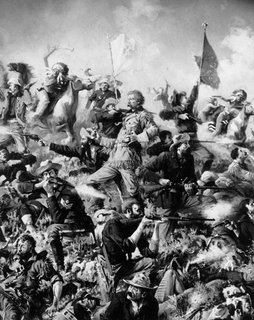Little Big Picture
 Citizens groups in New Orleans are providing the impetus on how the city will be rebuilt. At one end, neighborhood groups are getting together and deciding how their neighborhoods will be rebuilt.
Citizens groups in New Orleans are providing the impetus on how the city will be rebuilt. At one end, neighborhood groups are getting together and deciding how their neighborhoods will be rebuilt.
One neighborhood group, Pontilly Civic Association, which combines the neighborhoods of Gentilly Woods and Ponchartrain Park have been organizing charettes "to start creating a grass-roots vision of how Pontchartrain Park and Gentilly Woods should be rebuilt."
Judging from the story, these residents plans could be described as both pragmatic and compassionate to include facilities for the young and the old.
Because Katrina flooded Parkview and Coghill elementary schools, residents agreed it was time to replace the neighborhoods' two aging, flood-damaged facilities with one modern campus. They also said the rebuilding effort should include better social and health services for senior citizens.
Although a new senior citizens center serving the two neighborhoods opened just a few months before Katrina, residents said they want more opportunities for the older residents who founded the neighborhoods.
At the other end of the spectrum, the Bring New Orleans Back (BNOB) Commission appointed by Mayor C. Ray "Willie Wonka" Nagin is looking at the big picture.
As a post-hurricane entity, the commission went far beyond just storm and flood protection.Some members went so far as to criticize the moribund political culture of New Orleans.
The committees also have recommended ways to overhaul land-use planning, rebuild neighborhoods, consolidate duplicative elected offices, revive the city's cultural life, reorder its health and public education systems, and modernize the criminal justice system.
Michael Cowan, a theology professor at Loyola University who worked on the commission's education and government effectiveness committees, said such a broad approach was necessary because so many problems needed addressing. "A lot of the status quo was a disaster," Cowan said.Fortunately, many of us are not giving up, and like Gen. Custer, we will fight to the last man to save our city.
Before the Aug. 29 storm, the city's schools were failing, poverty and crime were high, and opportunities for economic advancement and homeownership were low. City government was widely viewed as inefficient, inept and corrupt. The population was declining as young and talented people moved elsewhere.
Meanwhile, Cowan said, "the power structure was so locked in that reform efforts just bounced off it. Good people … gave up."

No comments:
Post a Comment